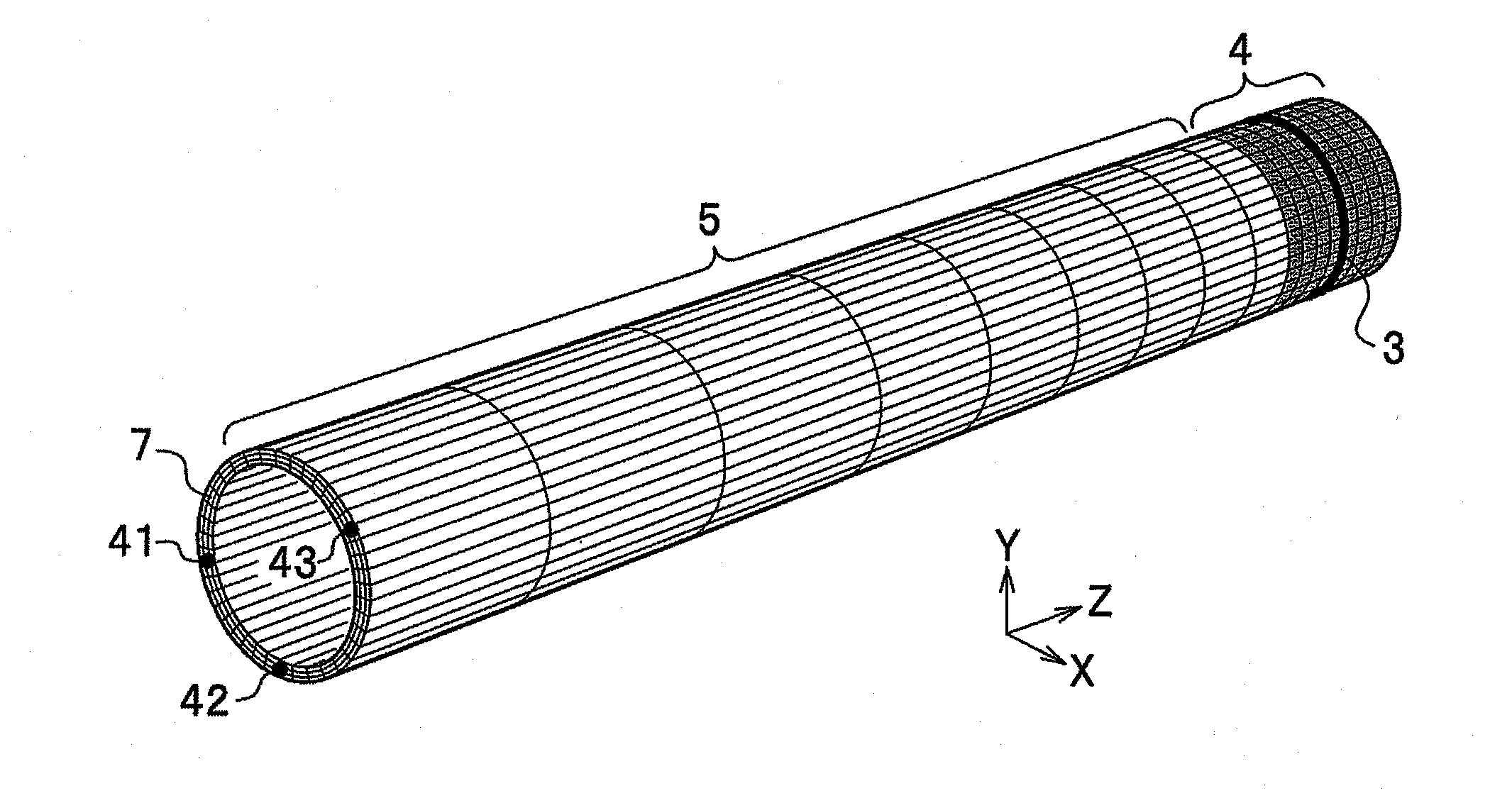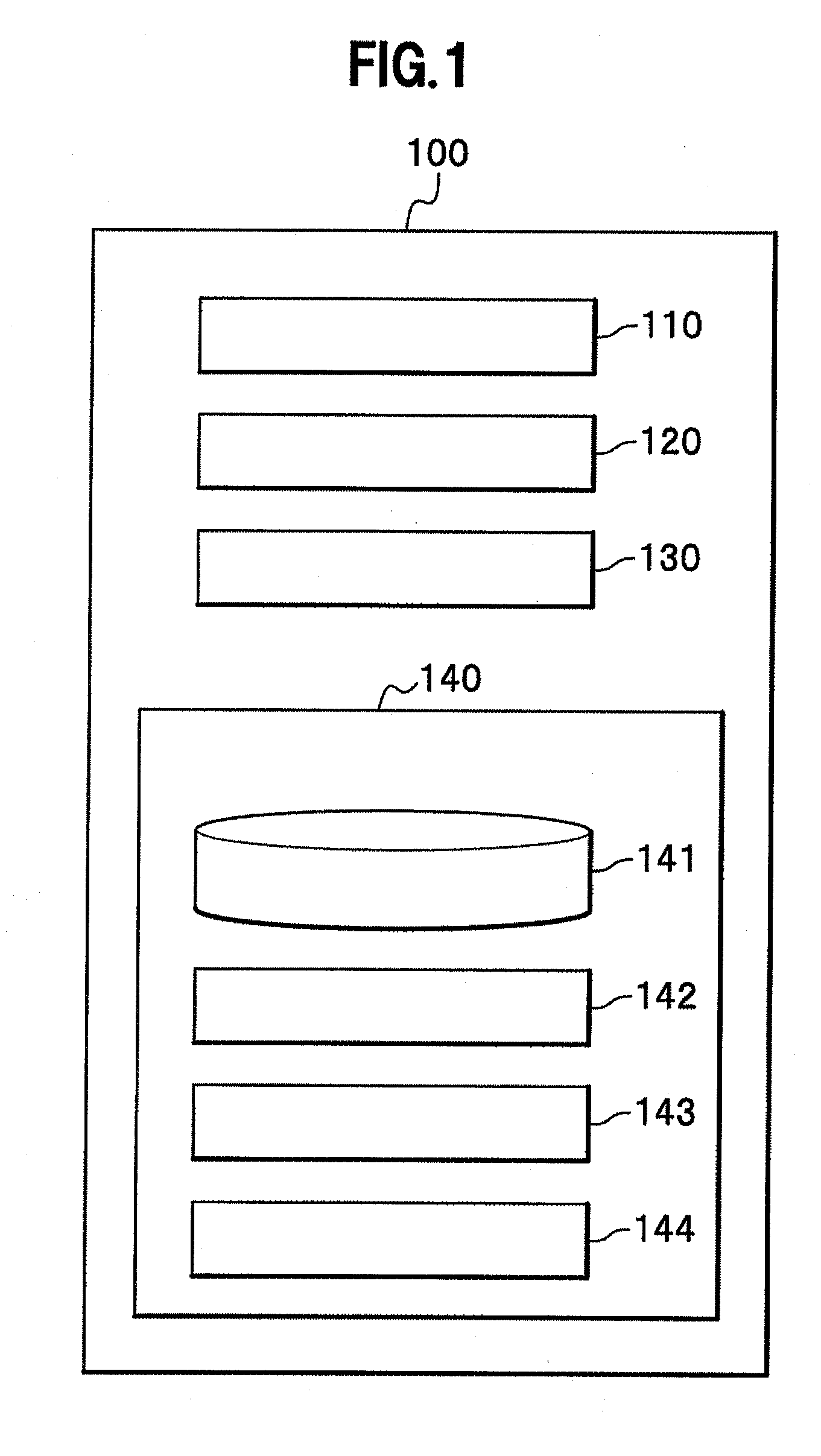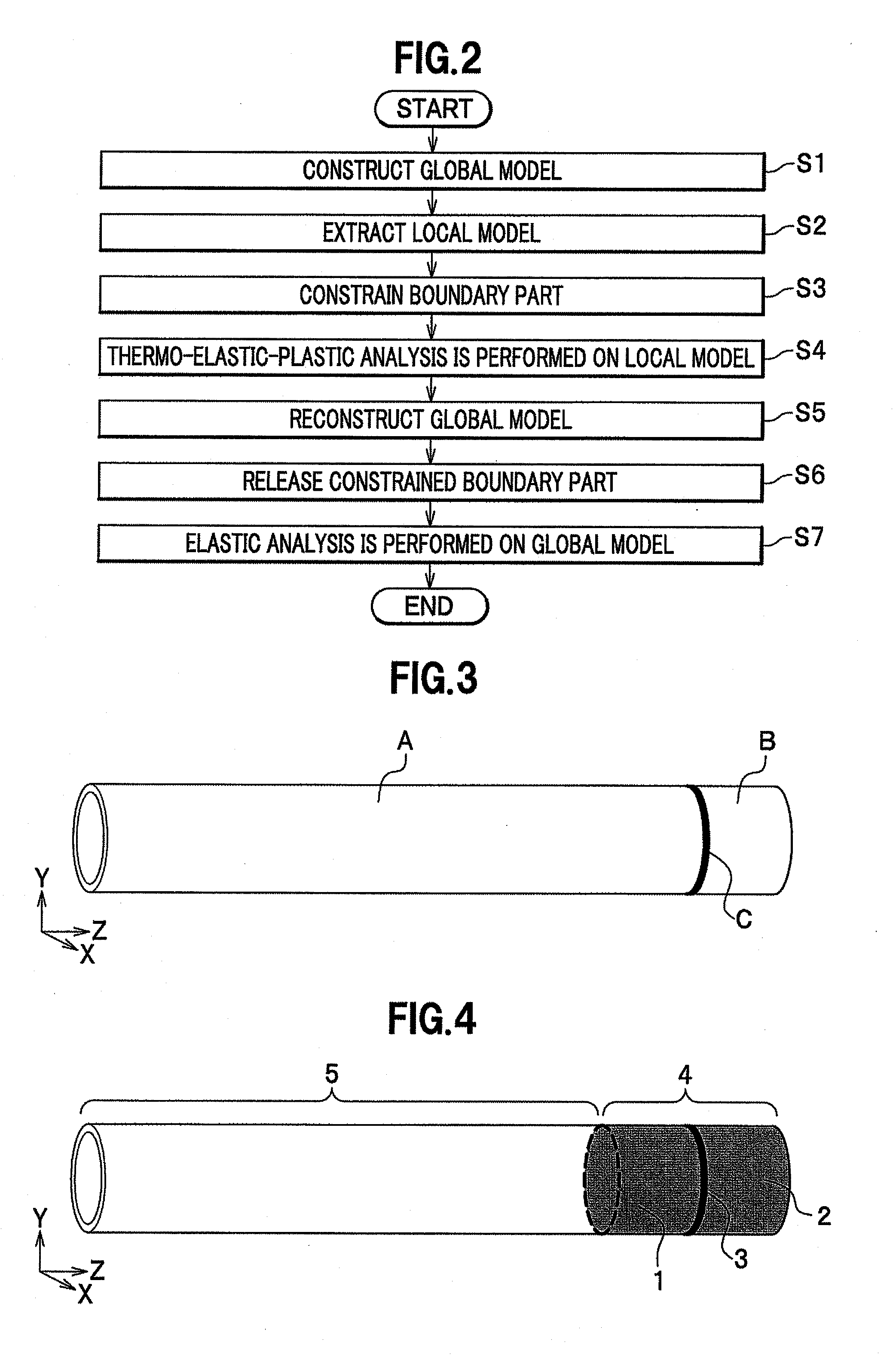Method for simulation of welding distortion
- Summary
- Abstract
- Description
- Claims
- Application Information
AI Technical Summary
Benefits of technology
Problems solved by technology
Method used
Image
Examples
example 1
[0067]Next, an explanation will be given of a first example in which the simulation method of this embodiment is applied to a welded structure having a specific shape defined.
[0068]FIG. 3 is a diagram showing a configuration of a welded structure as an analysis target. The welded structure is a pipe structure, and includes a to-be-welded member A and a to-be-welded member B both joined by circumferential welding C. The structure after welding has a length of substantially 5 m, a diameter of substantially 200 mm and a thickness of 7 to 13 mm.
[0069]The welded structure shown in FIG. 3 is converted into a finite element model, thereby generating a three-dimensional model. A mesh generating step (a part of the process by the model generating / processing unit 142) is performed on this three-dimensional model, and a global model is constructed.
[0070]FIG. 4 is a diagram showing a global model of the welded structure shown in FIG. 3. The global model includes a local model 4 (a meshed part) ...
example 2
[0105]Next, an explanation will be given of a second example in which the simulation method of this embodiment is applied to a welded structure having a specific shape defined beforehand as another example. The second example relates to a case in which setting of the constraint condition for the boundary part in the first example is changed.
[0106]The analysis target in this example is a pipe-like welded structure shown in FIG. 3 which is same as the one used in the first example. Moreover, the simulation method is same as the first example other than a process relating to setting of the constraint condition of the boundary part. That is, the simulation method of the second example comprises a step of converting, through the step of generating a mesh, a structure subjected to analysis into a global model, and extracting a local model including a welded part needing a thermo-elastic-plastic analysis from the global model of the welded structure which is the analysis target and which n...
PUM
 Login to View More
Login to View More Abstract
Description
Claims
Application Information
 Login to View More
Login to View More - R&D
- Intellectual Property
- Life Sciences
- Materials
- Tech Scout
- Unparalleled Data Quality
- Higher Quality Content
- 60% Fewer Hallucinations
Browse by: Latest US Patents, China's latest patents, Technical Efficacy Thesaurus, Application Domain, Technology Topic, Popular Technical Reports.
© 2025 PatSnap. All rights reserved.Legal|Privacy policy|Modern Slavery Act Transparency Statement|Sitemap|About US| Contact US: help@patsnap.com



